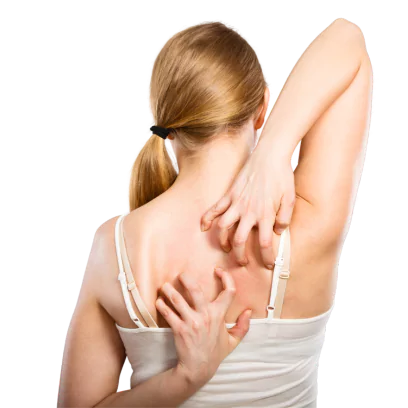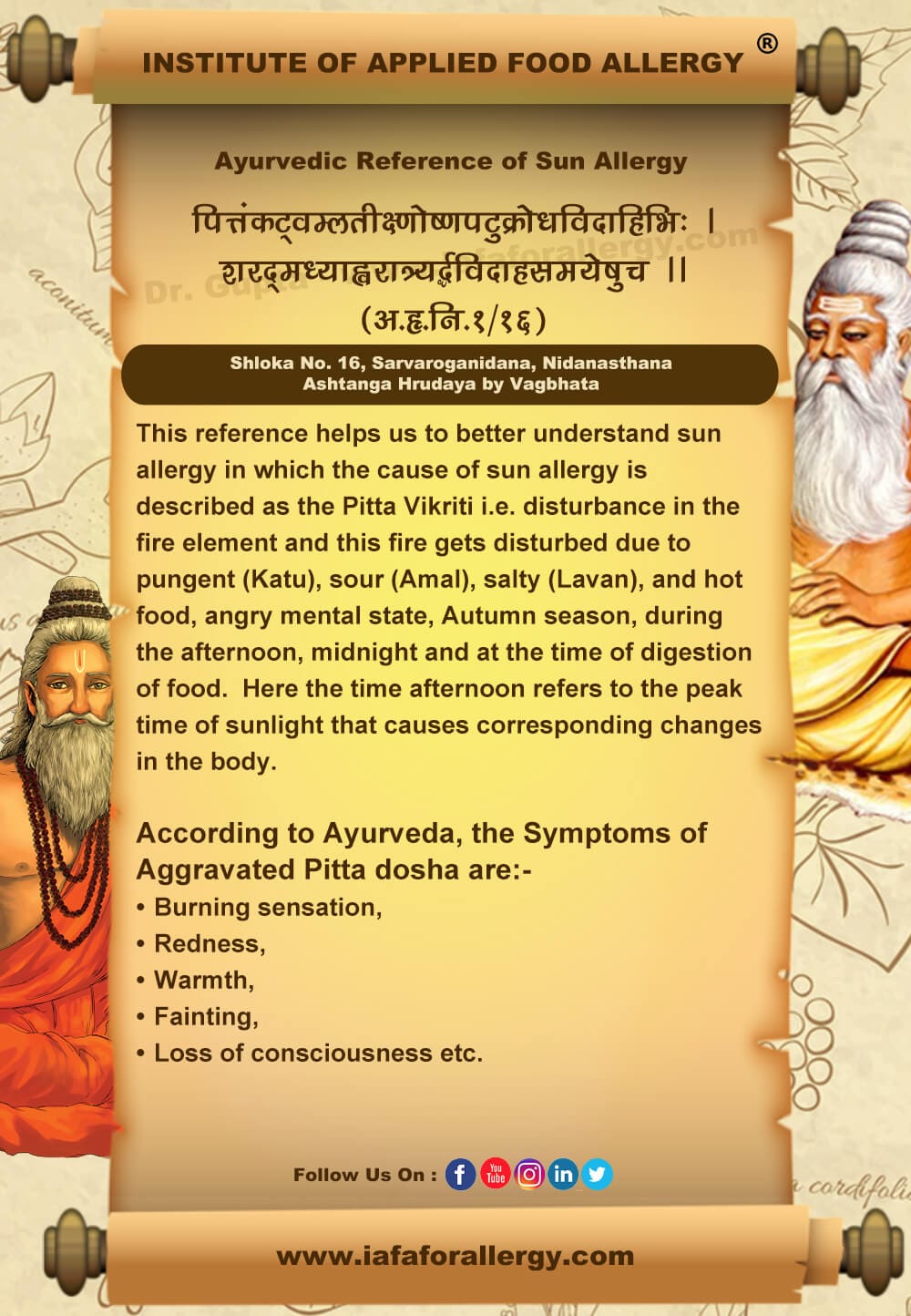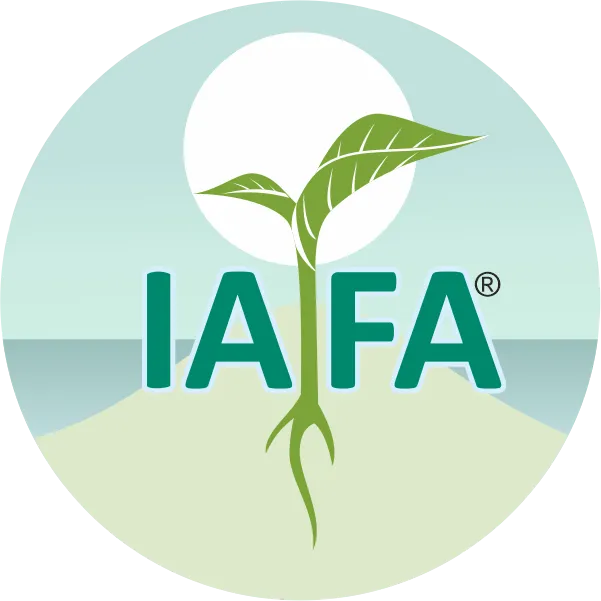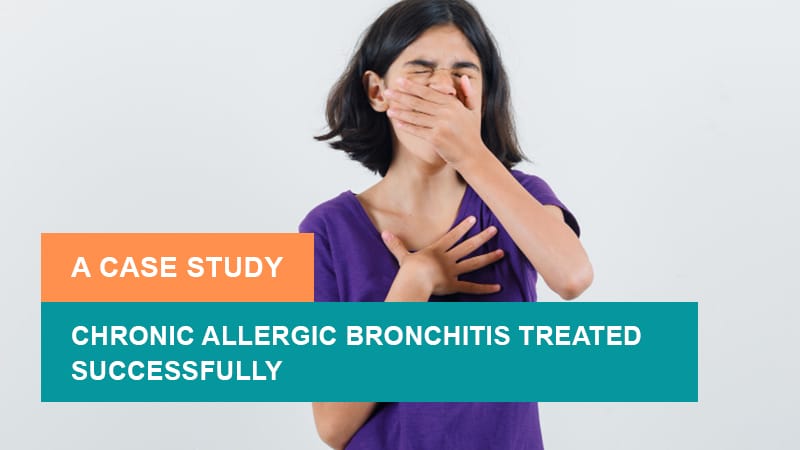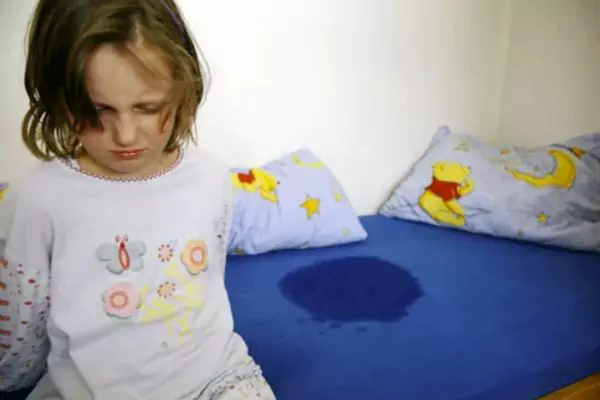On This Page
Introduction
When the skin of the individual reacts unusually to sunlight or artificial ultraviolet (UV) light then the condition is known as sun sensitivity or sun allergy. It is also famous among people for solar urticaria and photosensitivity. 4% of the people in the United States suffer from sun allergy and it is the most frequently developed allergy in adults in western countries which develop in their mid-30s. Solar Urticaria is a benign condition, but it severely alters the life of the individual and limits everyday activity. Symptoms of sun allergy can range from itching and redness to more severe reactions like the formation of blisters and hives.
In Ayurvedic classics, Sun allergy is considered due to the vitiation of Pitta Doshas i.e. fire element in the body which makes the skin of the individual highly sensitive to sun damage. In this article, you will find out the Natural Treatments for sun allergy like Panchakarma Procedures (internal purification of the body), Yoga procedures, Single Herbs, Diet and Lifestyle modification, etc. The treatment helps in balancing the vitiated Pitta, which will certainly help to decrease the harmful effect that occurs in the skin due to sun.
What is Sun Allergy?
Today UV rays are becoming a major problem for people throughout the world. These UV rays mainly affect the skin and as a result of this allergic reactions occur in the body in which the skin may develop rashes with itching. Solar urticaria or sun allergy is a chronic photosensitivity disorder in which recurrent episodes of urticaria occur in the part of the body that is exposed to the skin. Sun allergy is hereditary in a few individuals and in some cases, the sun allergy develops due to certain medications, cosmetics, etc.
Sun Allergy – As Per Ayurveda
As per Ayurveda whenever Pitta dosha (fire element) of our body is disturbed, it may be due to any cause like when you are angry, emotionally upset, hungry, use an excessive amount of sour, pungent, salty taste, etc. it will lead to disturbed Pitta Dosha which makes skin (Tvaka) of the individual more sensitive to the sun. whenever the individual with disturbed Pitta dosha is exposed to the sun, the external heat promotes more internal heat i.e. Pitta and its harmful effects can be seen in different parts of the body, especially the exposed one.
Who Gets Affected by Sun Allergy?
Sun allergy (solar urticaria) can affect individuals of gender and age, but certain factors can increase the chances of having the allergy. Due to lower melanin levels fair-skinned individuals are more prone to skin allergy and along with this if an individual has a family history of sun allergy, then also it heightens the risk of having sun allergy. The use of birth control pills or intake of antibiotics also makes skin more sensitive to the sun. Today as the use of skin care products is increasing day by day it is also becoming the leading cause of sun allergy as certain chemicals that are present in cosmetics or skin care products exacerbate the sun allergy.
How Common is Sun Allergy?
The prevalence of allergic diseases has dramatically increased throughout the world today and sun allergy is one of them.
Precise data related to its occurrence is not present in the but reported figures of sun allergies vary between 2.3% to 17.8%. (De Martinis M, Sirufo MM, Ginaldi L. Solar Urticaria, a Disease with Many Dark Sides: Is Omalizumab the Right Therapeutic Response? Reflections from a Clinical Case Report. Open Med (Wars). 2019 January 7; 14: 403- 406. doi: 10. 1515/ med- 2019- 0042. PMID: 31231681; PMCID: PMC- 6572395.)
Types of Sun Allergy
According to specific characteristics and symptoms, there are different types of sun allergy:
1. Polymorphic Light Eruption (PLE):
The sun allergy that is characterized by blister formation or burning red bumps formation on the skin part that is exposed to sun, and itchy skin is known as polymorphic light eruption. PLE is the most common type of sun allergy, and it typically occurs within hours to days after sun exposure, of the individual.
2. Actinic Prurigo:
The sun allergy by which Native American and Hispanic populations are primarily affected and which sun allergy is hereditary is known as actinic prurigo. Actinic prurigo often starts in childhood and in this allergy itchy, red bumps or patches develop after exposing the skin to the sun.
3. Solar Urticaria:
In solar urticaria within minutes of the individual being exposed to the sun they start developing itchy welts that are red and raised (hives). Solar urticaria is a rare condition that causes hives to develop and resolve within minutes after sun exposure and after sun avoidance respectively.
4. Drug-Induced Photosensitivity:
Certain medications like antidepressants, and NSAIDs use can make the skin more sensitive to sunlight, leading to an increased risk of sun allergy symptoms.
5. Photoallergic Eruption:
Specific substances that become activated by sunlight when come in contact with the individual may develop an allergic reaction. Common triggers include the use of medications like diuretics, antibiotics, and certain cosmetics (due to the presence of harsh chemicals), and lead to symptoms like redness, rash, or blister formation.
Causes of Sun Allergy
Sunlight allergy is caused by the hypersensitivity reaction of the body towards sunlight. Sunlight activates the body to produce antibodies that stimulate the secretion of histamines and other chemicals. These chemicals are responsible for allergic reactions in the body. It will be more common in people with a family history of Sunlight allergy, having other allergic skin diseases, who regularly use perfumes or other irritant cosmetics, etc. Mostly exposure to ultraviolet rays in sunlight causes more severe allergic reactions.
Causes of Sun Allergy – As Per Ayurveda
The below-mentioned causes result in increased Pitta (Bhrajaka Pitta) in the body which ultimately imbalance the body and shows disturbances in the body when exposed to sunlight:
- Intake of foods that Pitta aggravates (fire element aggravating) like Katu (pungent food), Amla (sour food), and Lavana (salty food).
- Drinks (Madya)
- Excessive consumption of corrosive food (Vidahi Anna)
- Excessive anger (Krodh)
- Fasting (Upvaas)
- Excessive intake of intense-acting food (Teekshana bhojan)
- Ayurveda also says that during the afternoon, there are chances for aggravation of Pitta dosha due to the intensity of sunlight.
Symptoms of Sun Allergy
Signs and symptoms of Sun Allergy include:
- Redness of exposed skin
- Itching
- Burning sensation
- Pain
- Small elevated rashes
- Dryness and scaling of skin
- Blisters
These are usually seen only on exposed skin. Symptoms usually develop within a few minutes to hours after exposure.
Associated Symptoms of Sun Allergy include:
- Low blood pressure
- Nausea
- Headache
- Breathing difficulty
Symptoms of Sun Allergy – As Per Ayurveda
According to Ayurveda, the symptoms of aggravated Pitta dosha are Daha (burning sensation), Lalima (redness), Osh, Plosha (warmth), Murchaa (loss of consciousness), etc.
Diagnosis of Sun Allergy – As Per Ayurveda
As per Ayurveda, the diagnosis of Sun allergy will be made according to Prakriti assessment, Vikriti evaluation, pulse diagnosis, lifestyle and dietary assessment, etc. as per the Dashvidha Pariksha (tenfold examination) mentioned in the Ayurvedic classics.
Ayurvedic Treatment for Sun Allergy
Ayurvedic Treatment for Sun Allergy offered by IAFA Ayurveda® provides a comprehensive and natural approach to managing and alleviating the symptoms of sun allergy. According to Ayurvedic classical texts, sun allergies are primarily caused by an imbalance in the body’s doshas, especially an aggravated Pitta dosha, which leads to hypersensitivity to sunlight. To address this imbalance, Ayurveda recommends a combination of natural remedies, purification therapies, and lifestyle modifications.
Panchakarma Therapy (Internal Cleansing) in Sun Allergy
The process that helps to eliminate harmful toxins and helps balance Dosha is known as Panchkarma or internal purification therapy. Lots of procedures mentioned in Panchkarma therapy can be used to get relief from sun allergy but Virechna (purgative therapy) is the topmost procedure that can be used as Pitta Dosha disturbance is involved. Swadu (Sweet), Sheet (cold potency) Virechan (Purgative therapy) are mainly done in this procedure by using formulation that contains Pitta pacifying herbs like Chandan (Santalum album), Usheera (Vetiveria zizanoides), etc. is used and disturbed Pitta is balanced which ultimately make skin less sensitive to skin. After the body is cleansed by the purification therapy Sansarjan Karma (special diet regime/ dietetic protocol) is followed which sequentially nourishes the individual, cleans the channels of the body and helps to minimize the effect of sun allergy.
Single Herbs in the Management of Sun Allergy
The top herbs that can be used for Ayurvedic Treatment of Sun Allergy are Shveta Kutaj (Wrightia tinctoria), Shirish (Albizia lebbeck), Nimba (Azadirachta indica), Kumari (Aloe vera), Chandana (Santalum album), Usheera (Vetiveria zizanioides), Utpala (Nymphaea alba), Priyangu (Callicarpa macrophylla), Durva (Cynodon dactylon), Pitpapra (Fumaria indica) and Lodhra (Symplocos racemosa), etc. These herbs have Sheeta Virya (cold potency), and are Bitter (Tikta), sweet (Madhur), and astringent (Kashaya) in nature. These ayurvedic herbs help to relieve Pitta Dosha and balance body humors after overexposure to the sun. They also exhibit various actions like aromatic effect, blood purifying effect, anti-allergic effect, anti-inflammatory activity, etc. by which they help to treat sun allergy.
Ghee (Clarified Butter) Consumption in Sun Allergy
Both A1 and A2 Ghee (clarified butter) consumption has benefits. Along with this clarified butter can be used or it can be used after medication with various herbs as per Dosha’s involvement. So, after consultation with a physician, one can consume clarified butter to balance Pitta Dosha.
Lepa (Paste) Use in Sun Allergy
The individual suffering from sun allergy after physician advice can use different Lepa (paste) over the body. In this procedure, the powder of the prescribed herbs like Chandana (Sandalwood), Karpur (Camphor), Mehandi (Lawsonia inermis), etc are mixed with certain liquid media and applied over the affected part. These herbs due to their coolant nature (Sheeta Virya) help to reduce Daha (burning sensation) that occurs in sun allergy and along with this balance the Pitta Dosha.
Gem Therapy in Sun Allergy
Pearl (Moti) is mentioned in Astrology and Ayurveda, which is a coolant in nature. One can wear pearls as rings or garland (mala) which gives the body a cooling effect internally as well as externally. Hence protect the body during overexposure to the sun.

“Dr. Gupta’s IAFA® offers effective Ayurvedic management for Sun Allergy. Institute of Applied Food Allergy® is a pioneering center in the Ayurvedic management of various allergies including Sun allergy. IAFA ensures good results and relief to all suffering from the distressing effects of Sun allergy.”
Visit IAFA® and feel the true sense of health through Ayurveda!!!
– Dr. Sahil Gupta (B.A.M.S., M.H.A.)
Ayurvedic Allergy Specialist
CEO & Founder of IAFA®
At last, Easier Sun Allergy Management

Trusted by
More than 90,000 Patients

Convenient
at-Home Treatments

9.2 / 10
Customer Satisfaction Score
Diet and Lifestyle Guidance (Pathya-Apathya) in Sun Allergy
According to Ayurveda, if your diet is correct then medicine is of no use because a good gut is considered as the basis of a healthy individual. So, by giving attention to our daily diet, we not only get relief from the disease from which we suffer but also avoid the upcoming diseases. Below we mention some dietary and lifestyle guidelines that one can follow for sun allergy:
What to Do? (Pathya) in Sun Allergy
- Green leafy vegetables
- Green gram
- Fruits and salads
- Watermelon juice
- Gooseberry
- Use of Sugandhit Dravya (scents) which are Mridu (mild), Sheeta (cooling), and cordial.
- Use of Aloe vera gel on exposed parts
- Use of jewels, and garlands that are kept in excessively Sheeta (cold) water.
- Frequently sprinkle medicated cold water over the body. For infusing the water various herbs like Priyangu (Callicarpa macrophylla), Chanadana (Santalum album), etc can be used.
- Exercise early in the morning.
- In the peak sunny time, avoid going outside or remain in a shady area.
- Use fully covered dresses while exposed to the sun.
- Use of sunglasses and caps
- Get exposed to moonlight (Chandram) every night
What to Avoid? (Apathya) in Sun Allergy
- Katu (pungent), Amla (sour) food should be avoided.
- Diva Swapna (Day time sleeping) should be avoided.
- Ati- Yatra Gaman (Excessive traveling) should be avoided.
- Avoid the triggers of the allergy like certain medications, use of latex, etc.
- Avoid the fabric material that increases the symptoms of allergy, it is better to wear cotton clothes.
- Intake of non-vegetarian food especially seafood
- Excess consumption of Alcohol
- Cigarette smoking
- Fried food and bakery items
- Exposure to the sun between 10 am and 4 pm
- Heavy physical activity at noon
- Use of medications that make them sensitive to light
- Day sleep
- Mental stress
Yoga Procedures in Sun Allergy
Yoga Procedures such as Bhujanga Asana, Vipritakarini, Pawan Mukta Asana, Paschimottanasana, Trikonasana, Uttanasana, Vriksha Asana, Bala Asana, Shava Asana, Janu Sirsasana, etc helps to balance the Pitta Dosha in body, increase blood circulation that in turn aids in healing of rashes and blisters. It also helps to relieve mental stress and to energize body cells.
Pranayama like Sheetali Pranayama is also beneficial in enhancing calmness and reducing heat from the body. Thus, Sheetali pranayama is highly effective in balancing Pitta Dosha, purifying blood, and increasing oxygen-carrying capacity in the body. It also helps to maintain healthy and glowing skin of the individual.
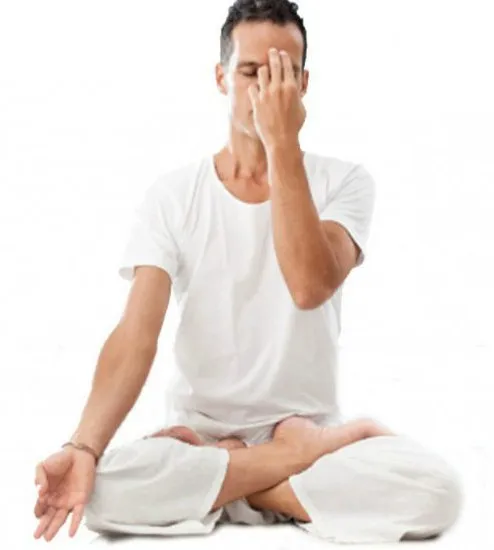
Frequently Asked Questions
Question: Why Do Sun Allergies Occur?
Answer: Sun allergy occurs when our skin abnormally responds to sunlight or even to artificial ultraviolet rays. The main reasons for these abnormal reactions are the immune system’s abnormal reaction, use of certain medications, genetic predisposition, chemical sensitivity, etc.
Question: Is Sun Allergy Contagious?
Answer: No, sun allergy is not contagious. It is a photosensitivity that occurs due to an abnormal reaction of the body to sun exposure and has no relationship with any bacteria or virus.
Question: What Deficiency Causes Sun Allergy?
Answer: As such there is no specific deficiency in the body that results in sun allergy but there are a few deficiencies in the body that can increase the risk of sun allergy like Vitamin D, C, and E deficiency and deficiency of omega 3 fatty acid in the body.
Question: Is Sun Allergy an Autoimmune Disease?
Answer: In Sun allergy, the response of the immune system is involved but it is more considered as skin sensitivity not typically an autoimmune disorder.
References
- Vagbhatta Astanga Hridaya, Nidana Sthana, Chikitsa Sthana, edited by Y. Upadhaya, Chaukambha Prakashan, Varanasi, 2012.
- Shastri K. Ambikadatta, Sushruta Samhita of Maharsi Sushrut edited with Ayurveda Tattva Sandipika Hindi Commentary, 13th Ed., Varanasi: Chaukhamba Sanskrit Bhawan., (Vol-II), 2000.
- Tripathi Brahmanand and Pandey G.S, Charaka Samhita of Agnivesa with Charaka Chandrika Hindi Commentory, 6th Ed., Varanasi: Chaukhamba SurbharatiPrakashan., (Vol-II), 1999.
- Jan K. Brzezinski, Yoga Trangini, A rare commentary on Goraksha Samhita, Published by Himalayan Yoga publication trust, First edition, Delhi, 2015.
- B. K. S. Iyengar, Light on Pranayama.
- Swami Dwarika Nath Shastri, Hath Yoga Pradipika, reprint 2009, Chaukambha Vidya Bhavan.
- Acharya Shri Nivasa Sharma, Gherand Samhita, first edition 2006, Choukambha Vidya Bhavan.
- Murthy. K.R., Ashtanga Samgraha of Vagbhatta, Chaukhamba orientalia Varanasi- 221001, ninth edition, 230.
- Ram Karan Sharma, Vaidya Bhagwan Dash translated, Agnivesa’s Caraka Samhita based on Cakrapani Datta’s Ayurved Dipika, vol. 1, Sutra Sthana, Chowkhamba Sanskrit series office, Varanasi, reprint 2018, Sutrasthan chapter no. 27.
Seek Expert Advice
Dr. Gupta’s IAFA® is a pioneering center in the Ayurvedic management of various allergies including Sun allergy. IAFA® ensures good results and relief to all suffering from the distressing effects of Sun allergy.
Visit IAFA® and feel the true sense of health through Ayurveda!!!
Was this Page Helpful?
So IAFA® Ayurvedic Management of Sun Allergy is Just 3 Steps Away!

01. Connect With Us
Share your history of illness or Book your appointment

02. Consult With Us
Dr. Gupta a certified Ayurvedic Allergist Consultant

03. Root Cause Treatment
Get an accurate diagnosis, medicines, diet & lifestyle change
Real Case Studies – Successfully Treated Patients
Real Case Studies of Successfully Treated Patients from All Around the World by IAFA Ayurveda®

9 Year Old Female Patient Recovered from Chronic Allergic Bronchitis – A Case Study
This case study presents a 9-year-old female patient who has successfully recovered…
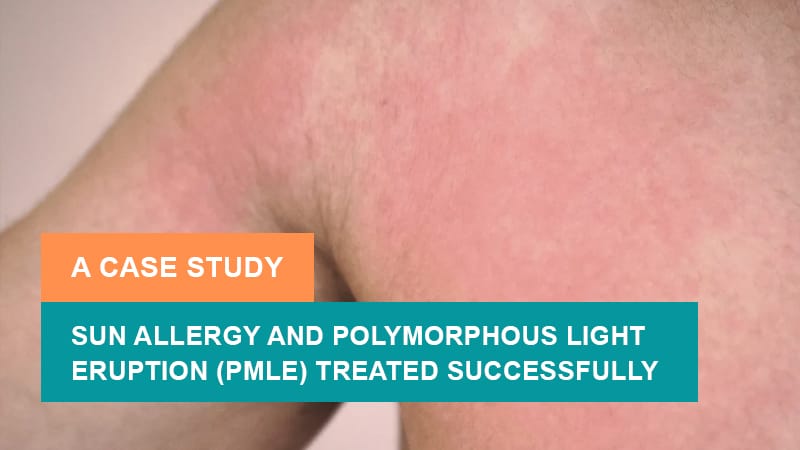
12-Year-Old Child Recovered from Sun Allergy and Polymorphous Light Eruption (PMLE) – A Case Study
This is a case study of a 12-year-old child who has successfully…

40-Year-Old Female Patient Recovered from Dyshidrotic Eczema and Onychomycosis – A Case Study
This case study highlights the successful recovery of a 40-year-old female patient…

40-Year-Old Female Patient Recovered from Urticaria and Angioedema – A Case Study
This case study focuses on a 40-year-old female patient who has successfully…
Read More Articles

Bed Wetting (Shayyamutra)
Bedwetting is an embarrassing habit in some children where they are unable…

Attention Deficit Hyperactivity Disorder – ADHD (Vatika Unmada)
Contact IAFA Ayurveda® to get safe and natural remedies for the treatment…


